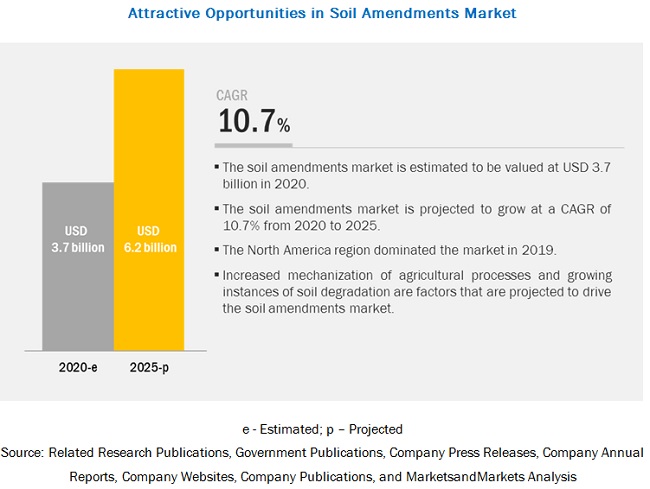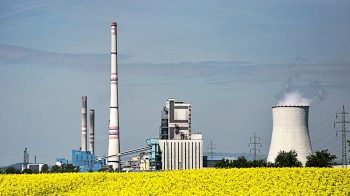The soil amendments market is estimated to account for a value of USD 3.7 billion in 2020 and is projected to grow at a CAGR of 10.7% from 2020, to reach a value of USD 6.2 billion by 2025. The global market is projected to witness significant growth due to factors such as growing awareness about soil health management, easy availability of humic substances as raw materials, and strong demand for high-value crops.
The main reason for adding soil amendments to the soil is to provide a better environment for roots and plant growth. This includes the improvement of soil structure and water-holding capacity, availability of nutrients, and living conditions for soil organisms, which are important for plant growth.
By crop type, the fruits & vegetables segment is projected to be the fastest-growing in the soil amendments market during the forecast period.
Major factors driving the demand for high-value crops, such as fruits & vegetables, are rise in incomes, rapid urbanization, and growth in awareness about the health benefits associated with fruits & vegetables. Another factor that has encouraged the agricultural production of high-value crops is the increase in foreign direct investment (FDI). High-value crops are mostly grown in permanent croplands in various regions.
Moreover, the application of soil amendments in fruits & vegetables remains high due to various advantages, such as increased organic content in the soil and root growth.
By type, the organic segment is projected to be the fastest-growing segment in the market during the forecast period.
Organic soil amendments are added to the soil to address physical, chemical, and biological properties rather than mainly catering to the problem of low water-holding capacity. The presence of organic matter in soil increases water and nutrient content, water and nutrient holding capacities, and cation exchange capacity. It improves soil texture and pH and provides energy sources for microorganisms. Due to these benefits, the organic segment is projected to be the fastest-growing in the market.

By soil type, the loam segment is projected to be the fastest-growing in the soil amendments market during the forecast period.
The loamy soil has different particle sizes and is a combination of sand, silt, and clay. The loamy soil is suitable for most of the crops, particularly fruits & vegetables. Due to its porous texture, the loamy soil allows adequate water to flow through slowly for plants to access it. The relative density of loam soil is between 0%–15%, and thus, it falls under loose soil. Loose soil provides room for air to mix into the soil, which is also necessary for optimal plant growth. In addition, rotational farming is increasingly practiced on loamy lands, which is projected to drive the demand for agrochemicals, such as soil amendments.
By form, the liquid segment is projected to dominate the market during the forecast period.
Though dry forms are produced and offered globally, most soil amendments are available in liquid forms. Dry forms of soil amendments offer improved shelf life as compared to liquid forms. Key factors, such as crop type, size of the field, and climatic conditions prevalent in a particular region, influence the selection of the form of soil amendments to be used. The liquid segment is projected to be the most preferred form among farmers for its effectiveness in the application of soil amendments due to the associated benefits, such as high application capability and efficacy rate as compared to dry forms.
Key players in this market include BASF (Germany), Bayer (Germany), UPL Limited (India), FMC Corporation (US), ADAMA Agricultural Solutions (Israel), and Nufarm (Australia). These major players in this market are focusing on increasing their presence through expansions, mergers & acquisitions, partnerships, and agreements. They have a strong presence in North America, Asia Pacific, and Europe. They also have manufacturing facilities and strong distribution networks across these regions.
